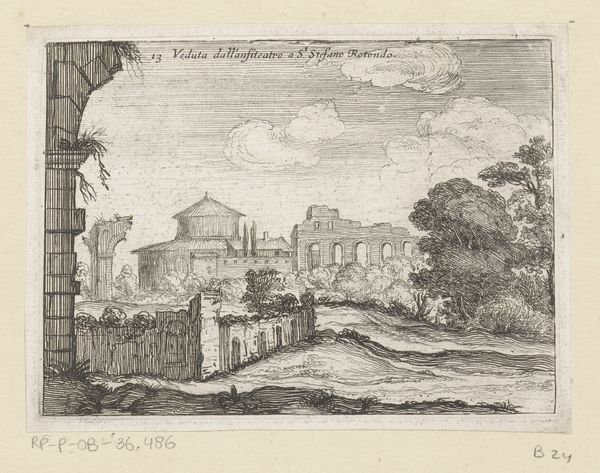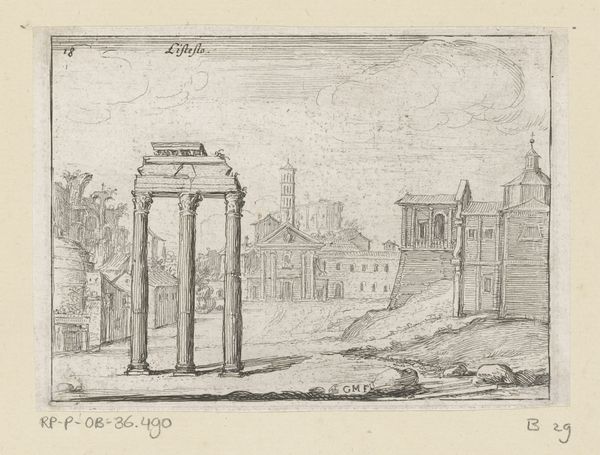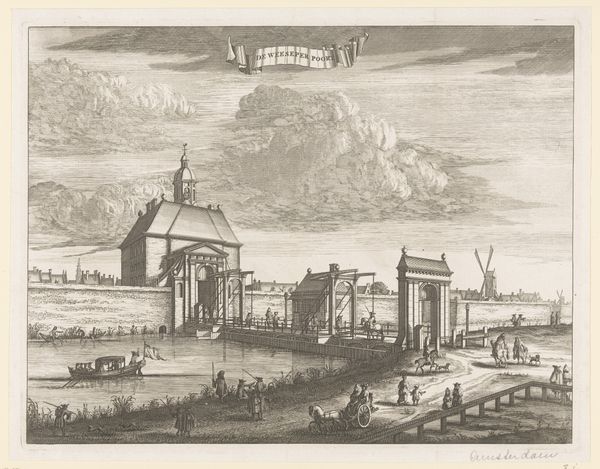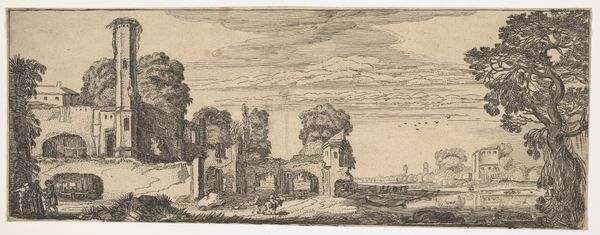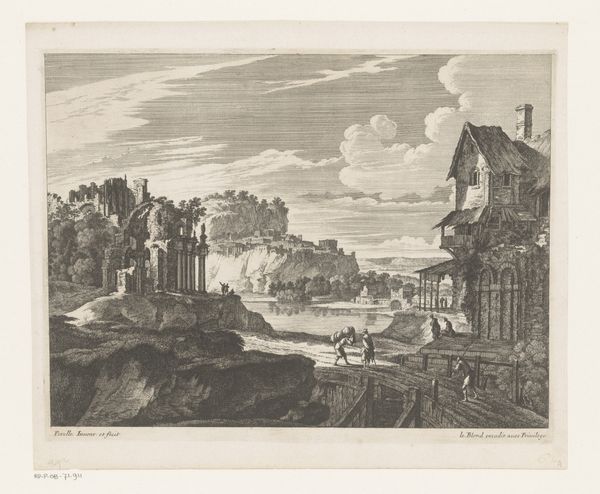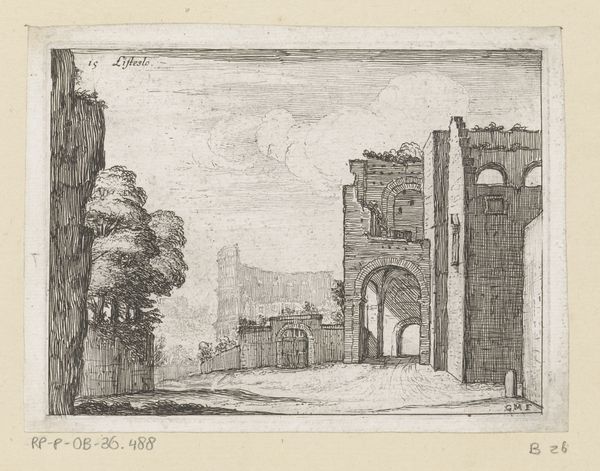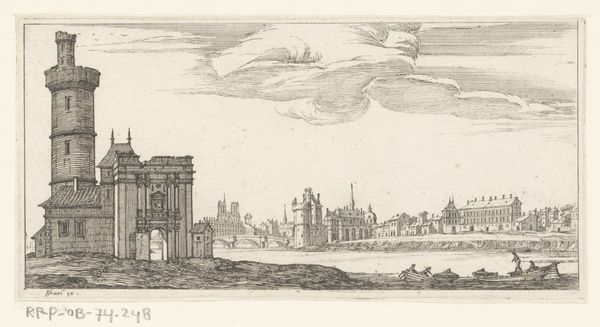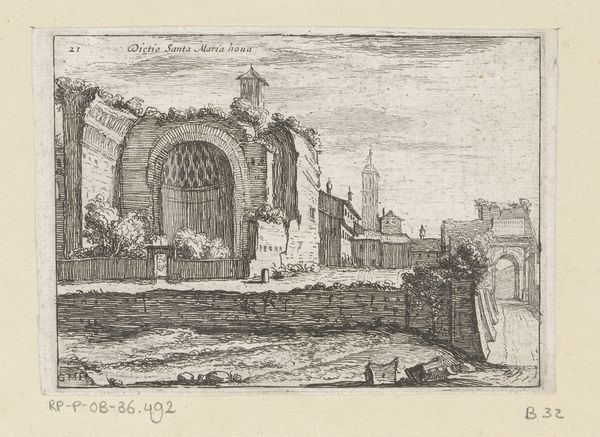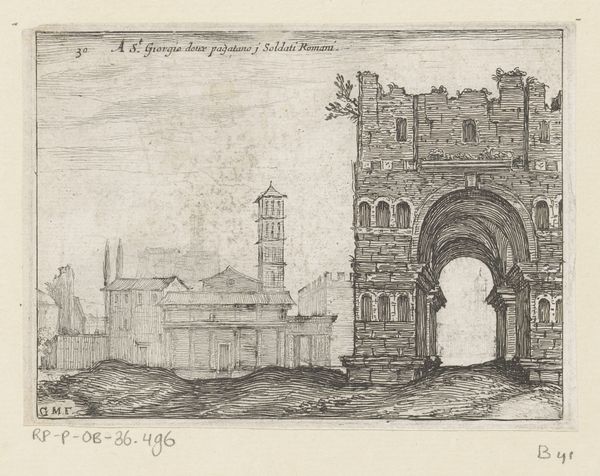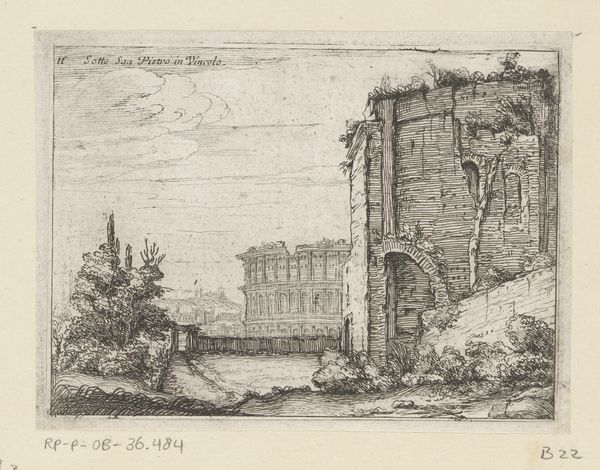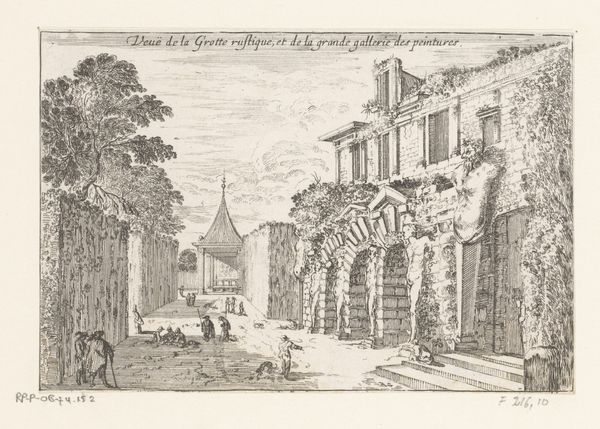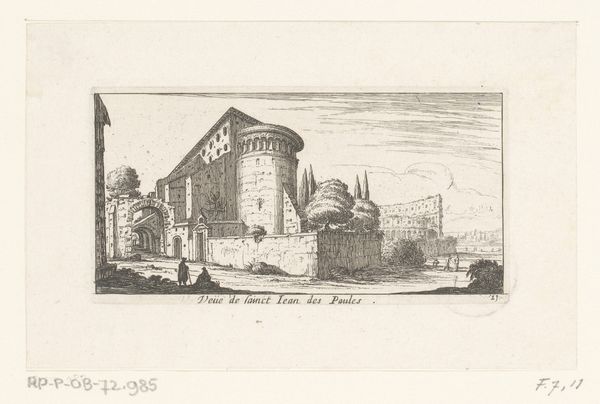
drawing, print, etching, engraving
#
drawing
# print
#
etching
#
landscape
#
perspective
#
romanesque
#
line
#
cityscape
#
history-painting
#
italian-renaissance
#
engraving
Dimensions: height 96 mm, width 130 mm
Copyright: Rijks Museum: Open Domain
Curator: Giovanni Battista Mercati created this etching titled "Resten van de Thermen van Diocletianus te Rome," or "Remains of the Baths of Diocletian in Rome," in 1629. What catches your eye? Editor: It’s the ruins juxtaposed with the everyday. You have this imposing architecture, grand even in decay, framing figures casually strolling or lounging. It speaks to layers of history all coexisting in one space, the constant dialogue between past power and present lives. Curator: Precisely. Mercati’s choice to render the baths as ruins allows us to consider how empires rise and fall, leaving their mark, sometimes literally in stone, on subsequent generations. Notice how the use of perspective draws your eye to the remnants. Editor: Absolutely. That careful perspective and the detailed rendering highlight not just the architectural precision of the original structure, but also the violence inherent in its obsolescence. The Baths, a site of public life and imperial power, are now fractured, inviting a different kind of public engagement. Who gets to claim this space now? Curator: And that is the fascinating political question. These Roman ruins became powerful symbols in Renaissance and Baroque art, functioning not just as picturesque landscapes, but as statements about power, legitimacy, and the relationship of the present to antiquity. Editor: Yes, the image is powerful! What was the role of public space in antiquity? And what becomes the social function of once very populated places when the elite decide to abandon it. How that void will impact those populations who have always circulated around this place? It is fascinating that those are still important themes that resonate nowadays. Curator: It’s an elegy, a social document and a statement about shifting political powers. Editor: Thinking about its layered meanings opens doors into broader inquiries about time, power, and the role of public art, as you pointed out, Giovanni Battista Mercati leaves us pondering these complex interconnections between history and identity.
Comments
No comments
Be the first to comment and join the conversation on the ultimate creative platform.

